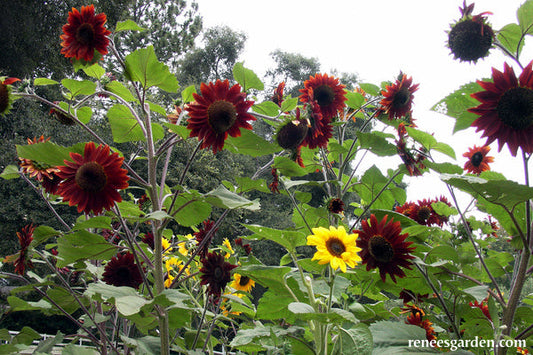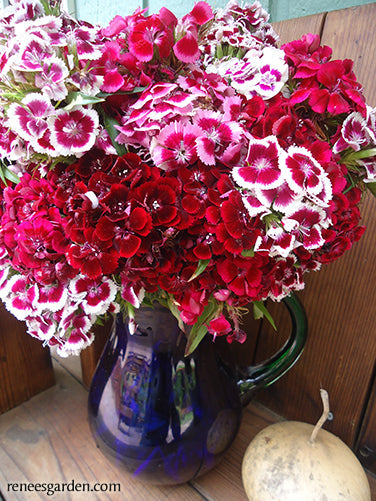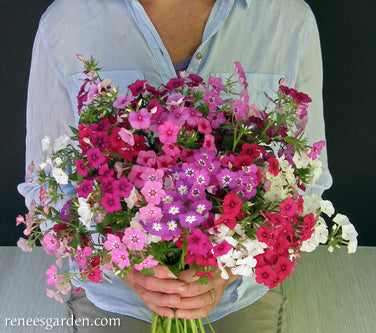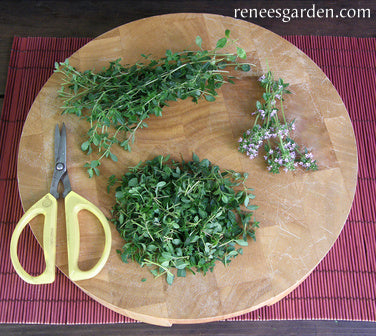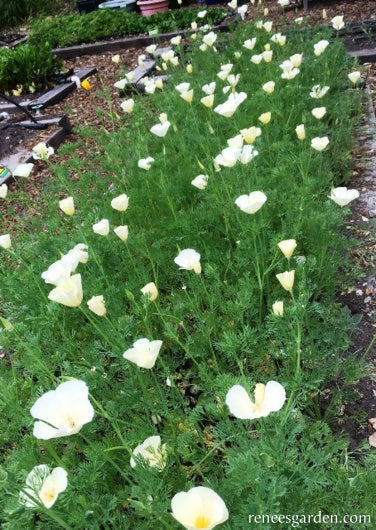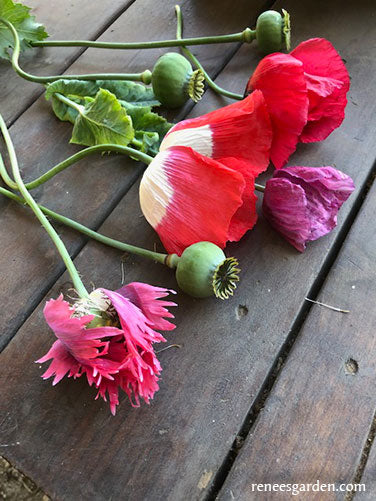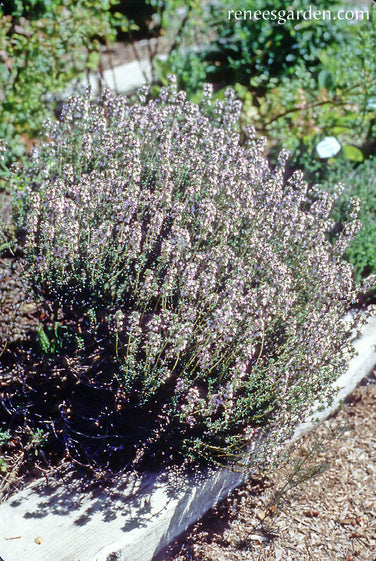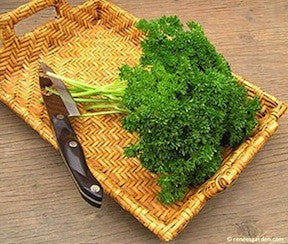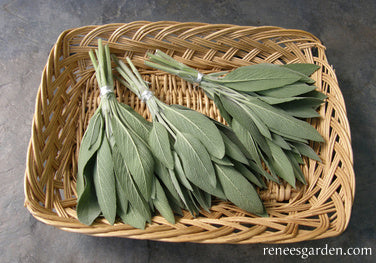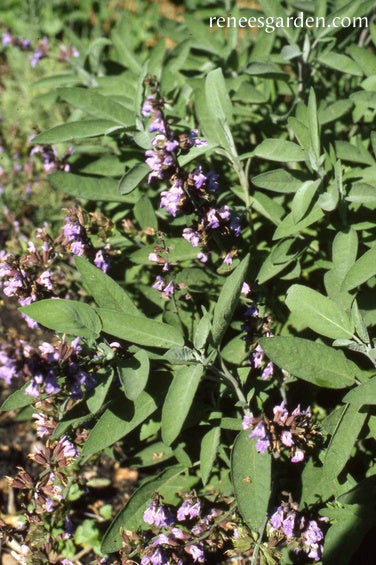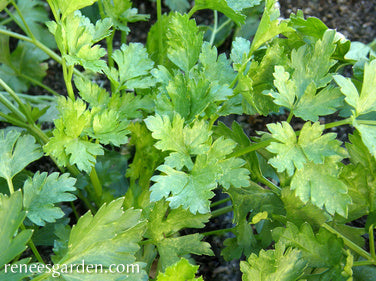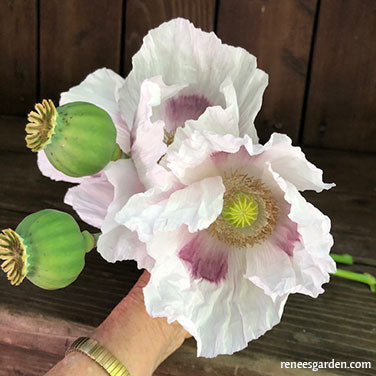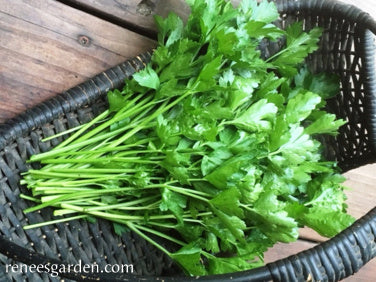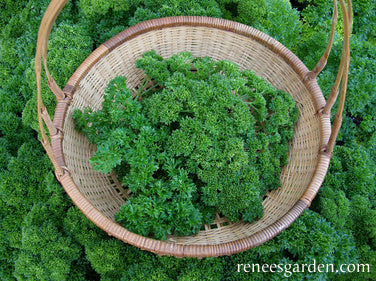Attracts Butterflies
Enjoy Enchanting "Flowers of the Air"
These blossom shapes and colors will bring butterflies to the garden all summer long to feed, rest and roost.
-
Bouquet Sunflowers Bright Bandolier
ANNUAL
Summer/fall bloom
Frost tenderTO PLANT OUTDOORS
Plant in full sun in good garden soil when weather is warm and settled both day and night and all danger of frost is past. Poke seeds into well-worked soil 1/2 inch deep and 4 to 5 inches apart. Press soil firmly over seeds and keep moist until germination in 8 to 10 days.
TO START EARLY INDOORS
Several weeks before last frost date, sow seeds 1/2 inch deep in individual pots of well drained seed starting mix. Keep moist and provide a strong light source until ready to plant outside when seedlings are large enough to handle. When weather has warmed into the 50° range, transplant carefully into the garden in full sun, disturbing the roots as little as possible.
THIN OR TRANSPLANT
Space seedlings 12 inches apart so plants have ample room to grow.
GROWING NOTES
Growing these flowers is easy and rewarding. Make several sowings, three weeks apart, to have a succession of bloom. Keep soil moist and well weeded and protect seedlings from hungry birds with netting or plastic berry baskets, removing before plants get crowded. Sunflowers need room! Be sure to thin seedlings when 3 inches tall to 12 inches apart.Regular price $3.69Sale price $3.69Unit price / per -
Sweet William Lace Mantle
BIENNIAL, BLOOMS FIRST YEAR
Late spring/summer
Hardy to Zone 3BEST TO START INDOORS
In spring, 8 to 10 weeks before last expected frost date, sow seeds 1 inch apart in a container of seed starting mix. Cover very lightly, no more than 1/4 inch deep, and keep moist while awaiting germination. Provide a strong light source for seedlings until they are ready to plant outside. Once large enough to handle, transplant seedlings 2 to 3 inches apart into deeper containers or pots so root systems have room to develop. Feed every 2 weeks with half-strength fertilizer. When 3 to 4 inches tall, gradually acclimate to outdoor conditions and plant 12 inches apart in full sun in early spring after frost danger is over.
GROWING NOTES
Lace Mantle is a new day length neutral variety bred to start blooming the first year from seed. Sweet Williams grow best in well drained, moist fertile soil. Plant them in full sun; in very hot summer areas, they will thrive with partial or light afternoon shade. Keep well-watered and feed several times during growing season. Cut when clusters of large florets are half open: buds open well in water and last for up to 10 days. After the first flush of bloom is over, cut back spent flower heads for rebloom.Regular price $3.39Sale price $3.39Unit price / per -
Butterfly Phlox Dutch Tapestry
ANNUAL
Summer/fall bloom
Frost tenderTO START OUTDOORS
Sow seeds in a well-worked seedbed in full sun when danger of frost is past and weather is warm and settled. Space seeds 2 to 3 inches apart in rows 10 inches apart, cover about 1/4 inch deep and gently firm soil. Keep soil evenly moist while awaiting germination in 10 to 15 days.
TO START EARLY INDOORS
Three to four weeks before last expected frost, sow seeds 1 inch apart in seed starting mix and cover lightly. Keep warm and moist and provide a strong light source until seedlings are well established. Transplant after gradually acclimating to outdoor conditions.
THIN OR TRANSPLANT
Space seedlings 6 inches apart when large enough to handle.
GROWING NOTES
Phlox grows easily in ordinary garden soil in full sun. If sown in place, thin plants before they get crowded; adequate spacing and regular even watering help keep them productive and disease free. Seedlings grow somewhat slowly at first, but once established, make sturdy, long-blooming garden performers that tolerate hot weather and attract butterflies and other pollinators all season.Regular price $2.99Sale price $2.99Unit price / per -
California Poppies Copper Pot
PERENNIAL/GROWN AS ANNUAL
Spring/Summer bloom
Can handle light frostBEST TO START DIRECTLY IN THE GARDEN
Sow seeds directly into a finely textured, well drained garden bed in full sun as early in spring as the ground can be worked. Plant as early as possible in spring, as poppies can handle light frost and bloom best and longest when plants get a good start in cool weather. In mild winter climates, Poppies can also be sown in late fall to overwinter for spring bloom. Except in very poor soil, these California poppies will grow and flower readily with no added fertilizer. Space seeds several inches apart, cover 1/4 inch deep, and firm soil gently. Keep soil moist as seedlings emerge. Weed young seedlings carefully. If seedlings come up very thickly, thin poppies early but delay final thinning until seedlings are well established in spring. Final spacing should be 6 inches apart as plants need room to grow and bloom.
GROWING NOTES
When mature, poppy plants can handle dry conditions, but they will always bloom longer if regularly watered. Poppies are pretty cut flowers if brought indoors just as buds begin to open. At season’s end, allow spent flowers to form pods and drop seed if you want poppies to self-sow for next year's spring flowers.
Regular price $3.99Sale price $3.99Unit price / per -
Kitchen Herbs Creeping Thyme
PERENNIAL
Spring/summer/fall harvest
Frost hardyBEST TO START INDOORS
Sow in early spring in a container of seed starting mix. Cover seeds very lightly and keep evenly moist but not soggy until seedlings emerge in 14 to 21 days. Provide a good light source until ready to plant outside.
TO PLANT IN THE GARDEN
Sow creeping thyme in a finely textured seedbed in full sun after soil has warmed up in spring. Good drainage is essential. Sow very thinly, cover seeds lightly and carefully keep the seed bed evenly moist and well weeded as young seedlings are slow growing at first. Transplant when 2 to 3 inches tall after acclimating to outdoor conditions.
THIN OR TRANSPLANT
Space clusters of 3-4 seedlings 8 inches apart when large enough to handle so plants have room to grow and thrive.
GROWING NOTES
Given good drainage and a sunny location, easy-growing creeping thyme plants are reliable and productive garden perennials. Be sure to thin or transplant seedlings to proper spacing and keep weed free; plants will fill out and spread once well established. Little lavender-rose flowers bloom atop the shiny dense leaves at midsummer.Regular price $2.99Sale price $2.99Unit price / per -
California Poppies Buttercream
PERENNIAL GROWN AS ANNUAL
Spring/Summer bloom
Can handle light frostBEST TO START DIRECTLY IN THE GARDEN
Sow seeds directly into a finely textured, well-drained garden bed in full sun as early in spring as the ground can be worked. Plant as early as possible in spring, as poppies can handle light frost and bloom best and longest when plants get a good start in cool weather. In mild winter climates, poppies can also be sown in late fall to overwinter for spring bloom. Except in very poor soil, these California poppies will grow and flower readily with no added fertilizer. Space seeds 2 or 3 inches apart, cover 1/4 inch deep, and firm soil gently. Keep soil moist as seedlings emerge. Weed young seedlings carefully. If seedlings come up very thickly, thin poppies early but delay final thinning until seedlings are well established in spring. Final spacing should be 3-4 inches apart as plants need room to develop and bloom.
GROWING NOTES
When mature, poppy plants can handle dry conditions but they will always bloom longer if watered regularly. Poppies are pretty cut flowers if brought indoors just as buds begin to open. Prolong bloom by removing spent flowers. At season's end, allow spent flowers to form pods and drop their seed if you want poppies to self-sow.Regular price $3.39Sale price $3.39Unit price / per -
Heirloom Poppies Pepperbox Poppy
ANNUAL
Spring/summer bloom, fall harvest
Frost hardyEASIEST TO START OUTDOORS
Plant poppies in late fall or very early spring directly into the garden. In cold winter climates, seeds will overwinter and germinate when soil thaws. Blossoms and pods are largest when plants grow in cool weather; seedlings are very cold hardy.
In a well-worked, finely textured seed bed in full sun, sprinkle seeds thinly (mixing dry sand with the seeds will help space them). Rake in gently or lightly cover seeds 1/8 inch deep and keep seed-bed moist until seedlings emerge in 7 to 14 days. If seedlings come up too thickly, thin poppies early, but delay final thinning to 6 to 8 inches apart until weather has settled in spring.
HARVEST & USE
Wait until seedpods are dried and brown on plants and the tiny seeds inside pods are hard and black. Cut seedpods with long stems and bunch upside down in an open paper bag. Shake seeds out into bag and remove any debris. Store clean seed in a closed jar or freeze for long storage.
Toasted Poppy seeds’ nutty flavor enhances both sweet and savory breads, cakes and cookies and is delicious in salad dressing.
Regular price $3.39Sale price $3.39Unit price / per -
Kitchen Herbs French Thyme
PERENNIAL
Spring/summer/fall harvest
Frost hardyBEST TO PLANT INDOORS
Sow thyme in early spring in a container of seed starting mix. Cover seeds very lightly and keep evenly moist but not soggy until seedlings emerge in 14 to 21 days. Provide a good light source. When seedlings are 2 inches tall, gradually acclimate to outdoor conditions and transplant clusters of 3-4 seedlings 8-10 inches apart.
TO START IN THE GARDEN
Plant thyme after soil has warmed up in spring in a finely textured seed bed with good drainage in full sun. Sow very thinly, cover seed lightly and be careful to keep the seed bed evenly moist and well weeded. When seedlings are several inches tall, thin out, leaving clumps of 3-4 seedlings 8-10 inches apart so plants have room to grown and spread.
GROWING NOTES
Given a sunny location with good drainage, easy-growing thyme plants are reliable productive and long-lived garden perennials. Little lilac flowers bloom in midsummer; cut back foliage halfway when the blossoms fade to keep plants looking fresh. Cut leafy thyme sprigs as needed once plants are well established.Regular price $2.99Sale price $2.99Unit price / per -
Kitchen Herbs Sweet Curly Parsley
TO PLANT DIRECTLY IN THE GARDEN
In spring when weather is settled but still cool, sow seeds 1 to 2 inches apart into well-worked fertile soil in full sun and cover 1/4 inch deep. If climate is very hot, plant in a spot with morning sun and afternoon shade. Parsley germinates unevenly over several weeks; be patient and keep seed bed evenly moist.
TO START EARLY INDOORS
Sow parsley seeds in early spring in a container of seed starting mix. Cover 1/4 inch deep, and keep container moist but not soggy until seedlings emerge. Provide a good light source. Feed seedlings frequently until ready to transplant when about 2 inches tall after acclimating to outdoor conditions.
THIN OR TRANSPLANT
Space 3 to 4 inches apart when seedlings have several sets of leaves.
GROWING NOTES
Parsley needs rich moist soil and ample spacing for lush harvests. Thin early and keep well weeded and watered. Begin to harvest sparingly once plants have 8 to 10 leaves. Fertilize monthly with a high nitrogen source for best leafy growth.Regular price $2.99Sale price $2.99Unit price / per -
Heirloom Herbs Italian Aromatic Sage
PERENNIAL
Spring/summer/fall harvest
Frost hardyBEST TO START EARLY INDOORS
In early spring, sow seed 1 inch apart in a container of seed starting mix and cover 1⁄4 inch deep. Keep evenly moist as seedlings emerge and provide a strong light source until ready to plant outdoors. Transplant 12 to 18 inches apart when seedlings are about 2 or 3 inches tall after gradually acclimating plants to outdoor conditions.
TO PLANT OUTDOORS
Sow seeds 1 inch apart in well-drained fertile soil in full sun in spring once weather is warm and settled. Cover 1/4 inch deep, firm soil over seeds and keep seedbed evenly moist. Germination takes 2 to 3 weeks. After seedlings are well established, thin or transplant 12 to 18 inches apart.
GROWING NOTES
Sage plants are resilient and drought tolerant once established. Cut leafy sprigs once plants are well leafed out. After flowers stop blooming, cut them well down the branch to encourage more leaf growth. Add a small pinch of crushed fresh sage to vegetables, casseroles, pork, poultry stuffing and cheese dishes. Combine fresh sage with chopped parsley to mellow its pungency. To dry, hang leafy branches upside down in a cool airy place.Regular price $2.99Sale price $2.99Unit price / per -
Heirloom Culinary Sage
BEST TO START EARLY INDOORS
In early spring, sow seed 1 inch apart in a container of seed starting mix and cover 1/4 inch deep. Keep evenly moist as seedlings emerge and provide a strong light source until ready to plant outdoors. Transplant 12 to 18 inches apart when seedlings are about 2 or 3 inches tall after gradually acclimating plants to outdoor conditions.
TO PLANT OUTDOORS
Sow seeds 1 inch apart in well drained fertile soil in full sun in spring once weather is warm and settled. Cover 1/4 inch deep, firm soil over seeds and keep seedbed evenly moist. Germination takes 2 to 3 weeks. After seedlings are well established, thin or transplant 12 to 18 inches apart.
GROWING NOTES
Sage plants are resilient and drought tolerant once established. Cut leafy sprigs once plants are well filled out. After flowers stop blooming, cut them well down the branch to encourage more leaf growth. Add a small pinch of crushed fresh sage to vegetables, casseroles, pork, poultry stuffing and cheese dishes. Combine fresh sage with chopped parsley to mellow its pungency. To dry, hang leafy branches upside down in a cool airy place.Regular price $4.89Sale price $4.89Unit price / per -
Heirloom Parsley Italian Large Leaf
EASIEST TO START OUTDOORS
Start parsley in spring when weather is settled but still cool and/or in late summer in mild winter climates. Plant in full sun or half-day sun if climate is very hot. Sow seeds 1- 2 inches apart into a well-worked fertile seed bed. Cover 1/4 inch deep. Parsley germinates unevenly over several weeks; be patient and keep seed bed evenly moist. Using synthetic row covers to hold moisture during germination is helpful; remove when seedlings are well established.
TO PLANT INDOORS
In early spring, sow seeds 1 inch apart and 1/4 inch deep in a container of seed starting mix. Keep container moist but not soggy until seedlings emerge. Provide a good light source. Feed seedlings frequently until ready to transplant when several inches tall.
THIN OR TRANSPLANT
Space 3 to 4 inches apart when seedlings large enough to handle.
GROWING NOTES
Parsley needs rich moist soil and ample spacing for lush harvests. Thin early and keep well weeded and watered. Begin to harvest sparingly once plants have 8 to 10 leaves. Fertilize frequently with a high nitrogen source.Regular price $4.89Sale price $4.89Unit price / per -
Heirloom Poppies Hungarian Breadseed Poppy
ANNUAL
Spring/summer bloom
Fall harvest
Frost hardyEASIEST TO START OUTDOORS
Plant poppies in late fall or very early spring directly into the garden. In cold climates, seeds will overwinter and germinate when soil thaws. Blossoms and pods are largest when plants grow in cool weather; seedlings are very cold hardy. In a well-worked, finely textured seed bed in full sun, sprinkle seeds as thinly as possible or sow in rows 8 to 10 inches apart. (Mixing dry sand with the seeds will help space them.) Rake in gently or lightly cover seeds 1/8 inch deep, and keep seed bed moist until seedlings emerge in 7 to 14 days. If seedlings come up too thickly, thin poppies early, but delay final thinning to 6 to 8 inches apart until weather has settled in spring.
GROWING NOTES
Flowers will bloom in spring and early summer, then drop their petals and form fat seed capsule pods. When pods get brown and hard, cut and store them in open paper bags. When completely dry, crack pods open to remove seeds. Store harvested poppy seed in the freezer to keep it fresh and pest free.
Regular price $3.39Sale price $3.39Unit price / per -
Hummingbird Penstemon Wedding Bells
PERENNIAL
Spring/Summer bloom
Hardy to zone 4BEST TO START INDOORS
Start indoors in early spring, spacing seeds 1/2–1 inch apart in a container of seed starting mix. Cover very lightly, no more than 1/8 inch deep and keep evenly moist but not soggy as germination takes 14 to 28 days. Provide a strong light source for seedlings.
Once seedlings are large enough to handle, transplant to a deeper flat 3 inches apart or individual 3 or 4 inch pots. When plants are several inches tall, gradually acclimate to outdoor conditions, then plant in full sun 10 to 12 inches apart into fertile well-drained soil.
TO START OUTDOORS
Sow in a well-protected, fine textured seed bed once frost danger is past. Cover seeds very lightly with fine soil and keep evenly moist until germination occurs. Tend the tiny seedlings carefully and when large enough to handle, thin or transplant 8 to 10 inches apart.
GROWING NOTES
Wedding Bells often bloom the first year from seed. Given good drainage, these strong plants will continue to flower beautifully throughout each spring and summer. Their lovely colors make beautiful natural bouquets and they are long-lasting and alluring cut flowers. Plants are hot weather tolerant once established.
Regular price $3.39Sale price $3.39Unit price / per -
Kitchen Herbs Italian 'Gigante' Parsley
BIENNIAL, GROWN AS ANNUAL
Spring/summer/fall harvest
Frost hardyEASIEST TO START OUTDOORS
Start parsley in spring when weather is settled but still cool and/or in late summer in mild winter climates. Plant in full sun or half-day sun if climate is very hot. Sow seeds 1-2 inches apart into a well-worked fertile seed bed. Cover 1/4 inch deep. Parsley germinates unevenly over several weeks; be patient and keep seed bed evenly moist. Using synthetic row covers to hold moisture during germination is helpful; remove when seedlings are well established.
TO PLANT INDOORS
Sow parsley seeds in early spring in a container of seed starting mix. Cover 1/4 inch deep, and keep container moist but not soggy until seedlings emerge. Provide a good light source. Feed seedlings frequently until ready to transplant when several inches tall.
THIN OR TRANSPLANT
Space 3 to 4 inches apart when seedlings large enough to handle.
GROWING NOTES
Parsley needs rich moist soil and ample spacing for lush harvests. Thin early and keep well weeded and watered. Begin to harvest sparingly once plants have 8 to 10 leaves. Fertilize frequently with a high nitrogen source.Regular price $2.99Sale price $2.99Unit price / per -
Heirloom Sweet Parsley Triple Curled
BIENNIAL, GROWN AS ANNUAL
Spring/summer/fall harvest
Frost hardyTO PLANT DIRECTLY IN THE GARDEN
In spring when weather is settled but still cool, sow seeds 1 to 2 inches apart into well-worked fertile soil in full sun and cover 1/4 inch deep. If climate is very hot, plant in a spot with morning sun and afternoon shade. Parsley germinates unevenly over several weeks; be patient and keep moist.
TO START EARLY INDOORS
Sow parsley seeds in early spring in a container of seed starting mix. Cover 1/4 inch deep, and keep container moist but not soggy until seedlings emerge. Provide a good light source. Feed seedlings frequently until ready to transplant when about 2 inches tall after acclimating to outdoor conditions.
THIN OR TRANSPLANT
Space 4 to 6 inches apart when seedlings have several sets of leaves. Feed monthly for best results.
GROWING NOTES
Parsley needs rich moist soil and ample spacing for lush harvests. Thin early and keep well weeded and watered. Begin to harvest sparingly once plants have 8 to 10 leaves. Fertilize monthly with a high nitrogen source for best leafy growth.Regular price $4.89Sale price $4.89Unit price / per

